Radiology Congress In Poland 2004
37th Polish Congress of Radiology, June 16-19
Golebiewski Hotel, Mikolajki, Poland

By Christopher A. Jankowski, RT(R)(MR)
 MIKOLAJKI, Poland—When I first left my home
MIKOLAJKI, Poland—When I first left my home in Minnesota and started out on my journey to cover
in Minnesota and started out on my journey to cover 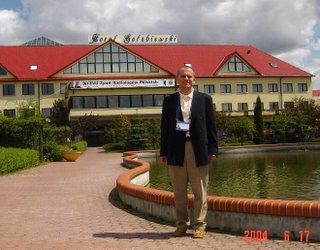 the 37th Polish Congress of Radiology held here in June, I immediately encountered complications.
the 37th Polish Congress of Radiology held here in June, I immediately encountered complications.We did not have a second pilot on the plane so we spent two hours waiting for the replacement in Minneapolis. As you can imagine, I was late for my connecting flight in Amsterdam and I finally landed in Warsaw, Poland's capital, seven hours late
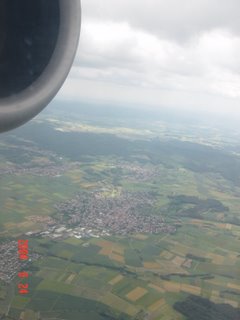 . Then, I still had a three-hour drive to my final destination—the Hotel Golebiewski in Mikolajki, where the meeting was being held.
. Then, I still had a three-hour drive to my final destination—the Hotel Golebiewski in Mikolajki, where the meeting was being held.Mikolajki, a small town known as the "Masurian pearl," is located in the isthmus separating the narrow tunnel—valley lakes of Mikolajskie and Talty.
Tourists first expressed interest in Mikolajki a few years after World War I ended and, since then, it has become one of the most popular summer resorts in the Masurian region. Many sailors reach the place in their wanderings because their main route from Ruciane-Nida to Giaycko and Ryn is by way of Mikolajki.
There are plenty of hotels, restaurants, bars, souvenir shops and jewelers selling silver and amber. The small town of just 4,000 inhabitants becomes a bustling tourist center in the summer.
The festivities begin
When I met the technologists from Poland at the hotel, I was very interested in how radiology has progressed in Poland, and they had a lot of questions about a normal working day of the technologists in Minnesota.
I was glad I could share my experience with the technologists
 I met from all over Poland, telling my friends about the technologist's role in radiology departments in the United States.
I met from all over Poland, telling my friends about the technologist's role in radiology departments in the United States.During the welcome cocktail, I tried the special Polish dishes—bass, northern pike and eel straight from Polish lakes—that I last tasted 15 years ago when I was living in Poland. I am not even going to mention the huge variety of soups and meat dishes available. Everybody had a lot of fun
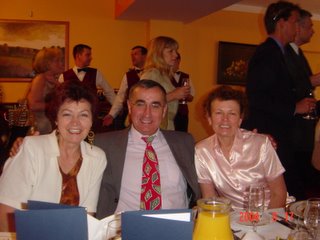 .
.The next day, after a morning swim (the hotel had a water park with tubes)
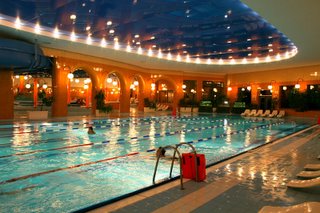 and a nice Swedish breakfast, all the participants went to the different rooms for the first sessions.
and a nice Swedish breakfast, all the participants went to the different rooms for the first sessions.I listened to a lecture about MR phase contrast velocity mapping flow analysis in dessected aorta. Other topics at the Congress included imaging of dysfunction of the musculoskeletal system, gynecology and obstetrics, breast imaging, functional imaging, diagnostic and therapeutic procedures of the circulatory system, pediatric radiology, quality control procedures and teleradiology.
That evening, Prof. Jerzy Walecki, the president of the organizing committee, welcomed almost 1,000 participants for the official banquet. During that event we listened to a few Polish entertainment stars tell jokes and sing songs.
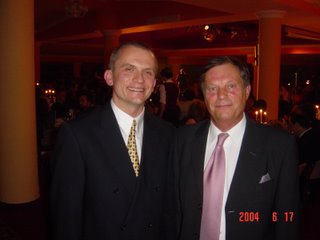
The food was just splendid. For example, the meal began with a dish of wild boar
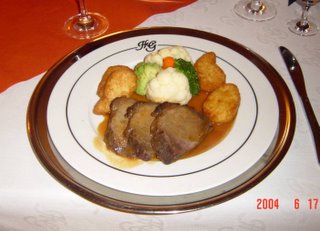 . Many people ate, talked, danced
. Many people ate, talked, danced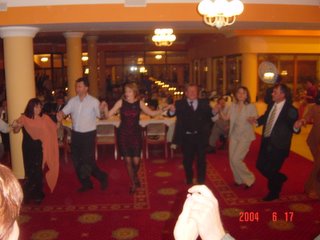 , sang, and then ate again. Before I knew it, the sun was rising over the Mazurian Lakes and it was time to go and rest.
, sang, and then ate again. Before I knew it, the sun was rising over the Mazurian Lakes and it was time to go and rest.Participants tour Poland
The next day started early with breakfast at 7 a.m. By 8 a.m., I was on the way to Kruty—for a kayaking and walking trip to the floristic sanctuaries, Wojnowo.
Wojnowo is on the way to Ukta. The weather was not really cooperating; it was raining, but I did not worry. I came from so far away I was not going to change my plans just because of the rain.
Krutynia is regarded as one of the most breathtaking lowland routes in Europe. It is most heterogeneous and curious, running through the Piska Forest and, at the point where it adjoins Lake Mokre, also through the Masurian Landscape Park. The route from Kruty—to Ukta is 13 kilometers long and takes about three to four hours to row
 . The stretch is a quiet section of the river with a slow current.
. The stretch is a quiet section of the river with a slow current.After one hour kayaking we found out we would have to carry our kayaks a short distance. Some of my colleagues said this was not in the description of the trip. In a few moments, we were back on the water. We started to paddle faster because the rain was coming down harder. Our female friends could not really keep up, especially when they had to keep their umbrellas to keep them from getting wet. The current was pushing them forward but very slowly.
One of the most picturesque places in Masuria, Wojnowo can pride itself on the monastery buildings dating back to the 1850s situated by the Lake Dus.
Wrapping things up
After a few hours we were back in the hotel and getting ready for different sessions. I spent my time listening about the present and future in Polish radiology and also attended a very interesting lecture about contrast MR, organized by Bracco Company.
When the sun started to go down, it meant the open-air folk party was about to start. Can you imagine a few hundred people having fun? It did happen. We had live entertainment, a comedy show, and dancing and Polish food. Polish radiologists and technologists spent time together eating great food.
During the last day, we had a lot of MR sessions. Many people left already. I listened to more lectures about MR contrast, MR breast exams and functional brain exams. After the last lectures, we all got together again to have an official closing ceremony.
Many young technologists and radiologists are very well educated and eager to learn more; they presented the majority of the very interesting sessions.
In my own opinion, after listening, watching and talking to my colleagues after a few days I came to a conclusion. I think the greatest obstacle in the Polish health system is actually the lack of the system itself.
The lack of money for the health system makes it very difficult to purchase top-of-the-line radiology equipment. Poland still cannot find a good solution for all the problems, but I see a lot of changes for better.
After the collapse of communism, Poland took the fast road to the open, free market. Poland just recently joined the European Union and I am sure it will help to catch up to the rest of Western Europe in the next few years. The average Polish citizens will have higher living standards and more access to health care services in the whole country.
I work as a staff MR Technologist at St. Paul Radiology in St. Paul, Minn. I can be reached at christopheraj@yahoo.com or christopheraj@poczta.wprost.pl


